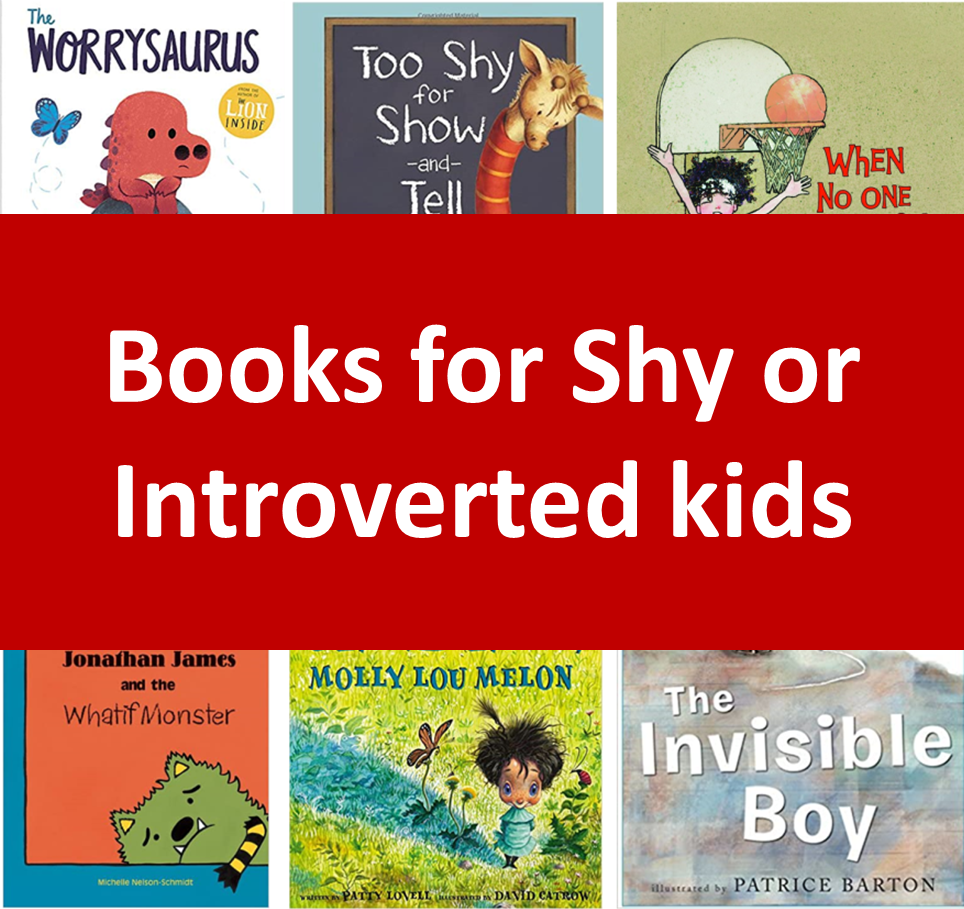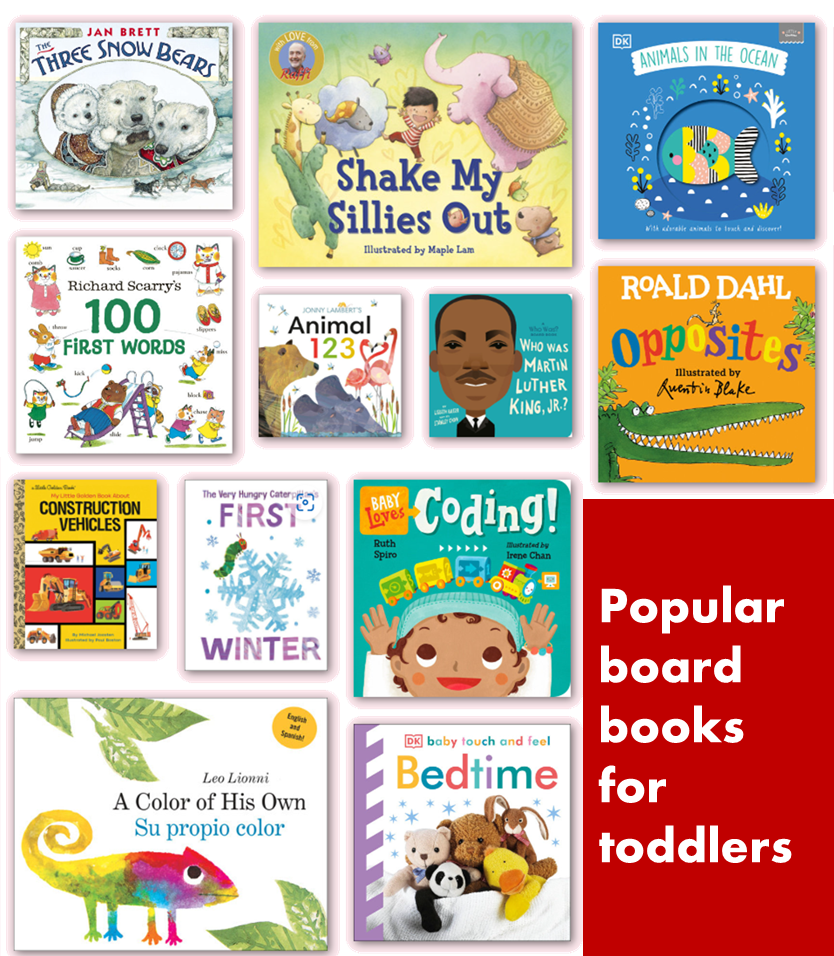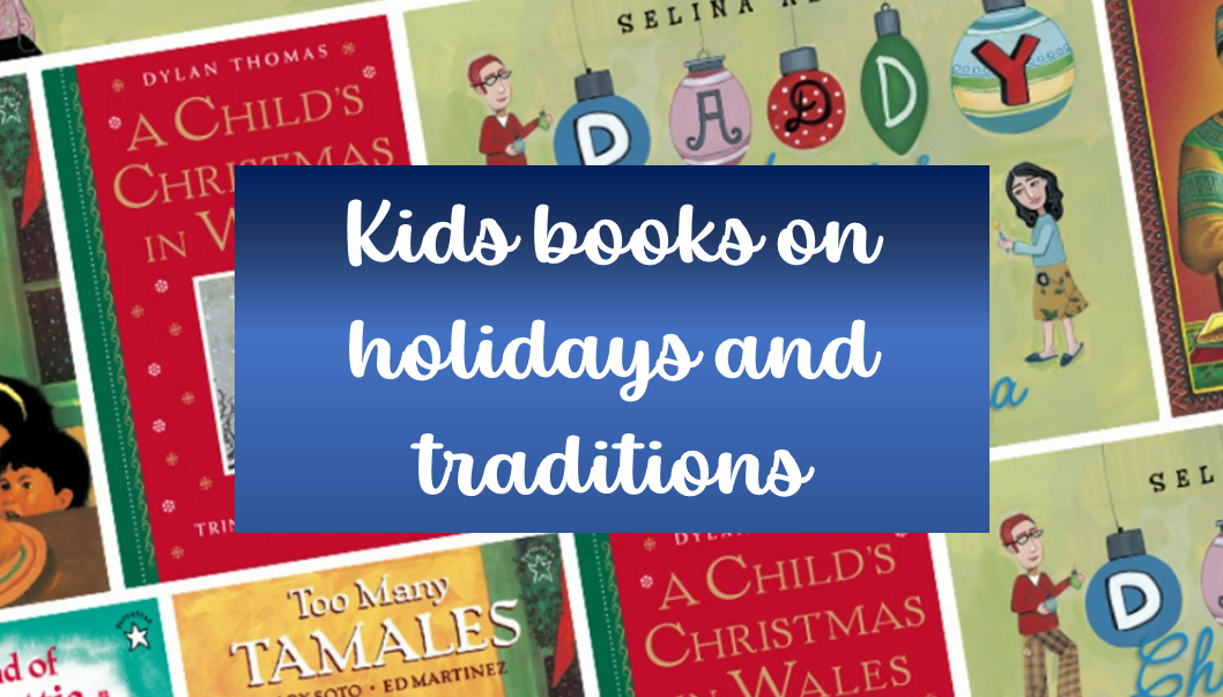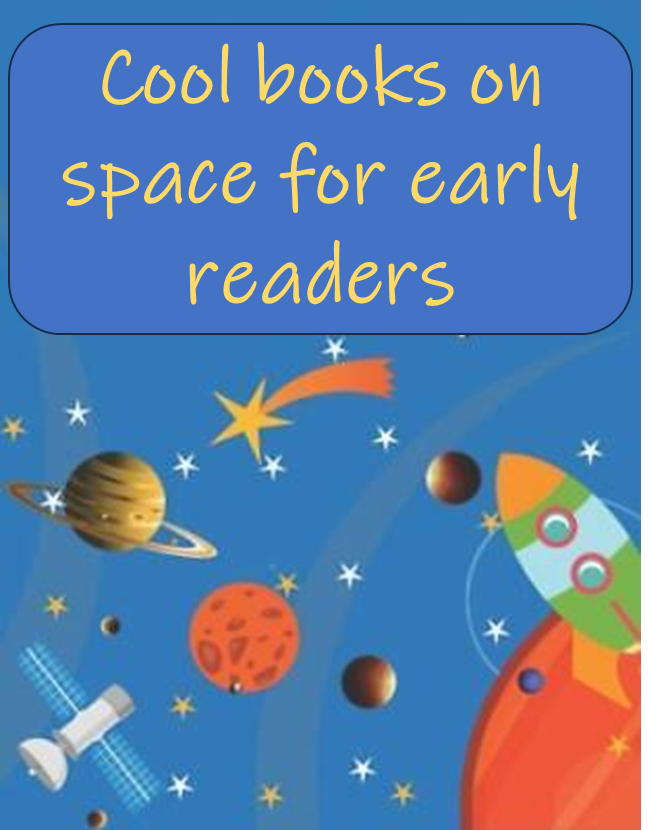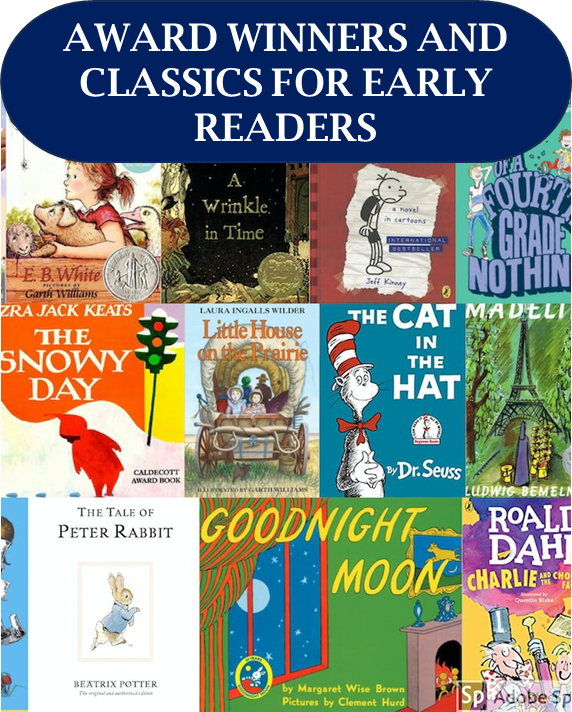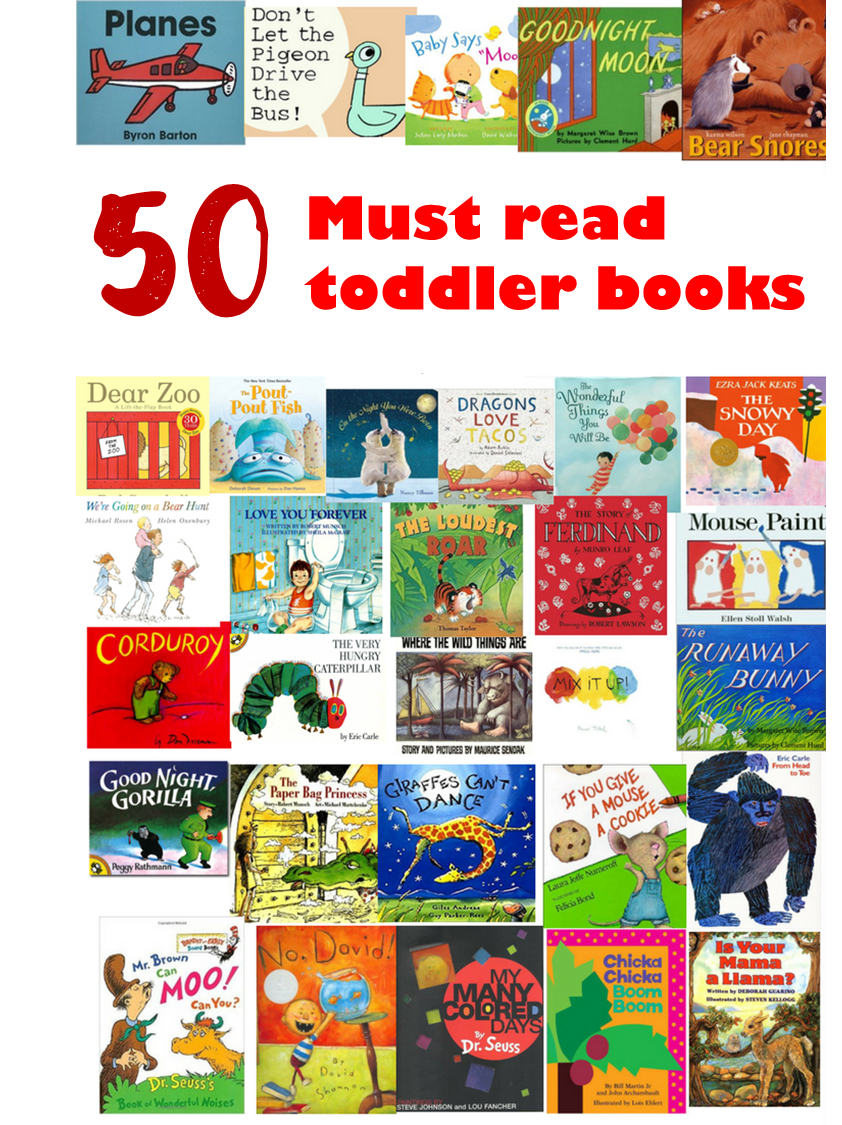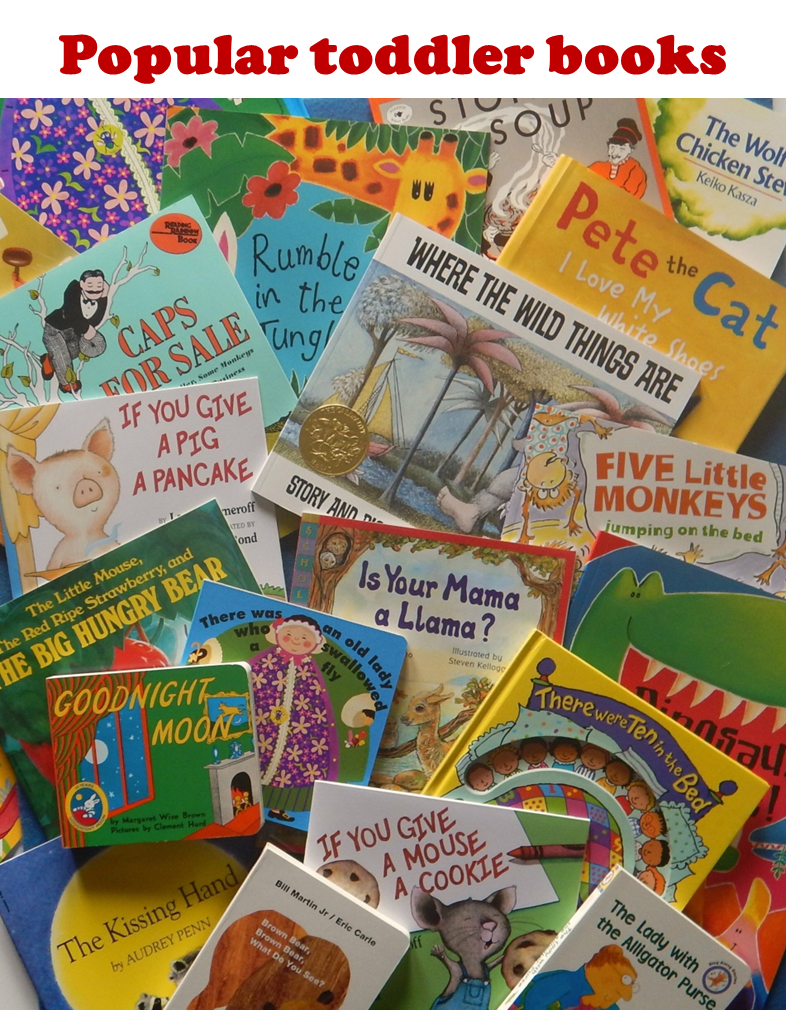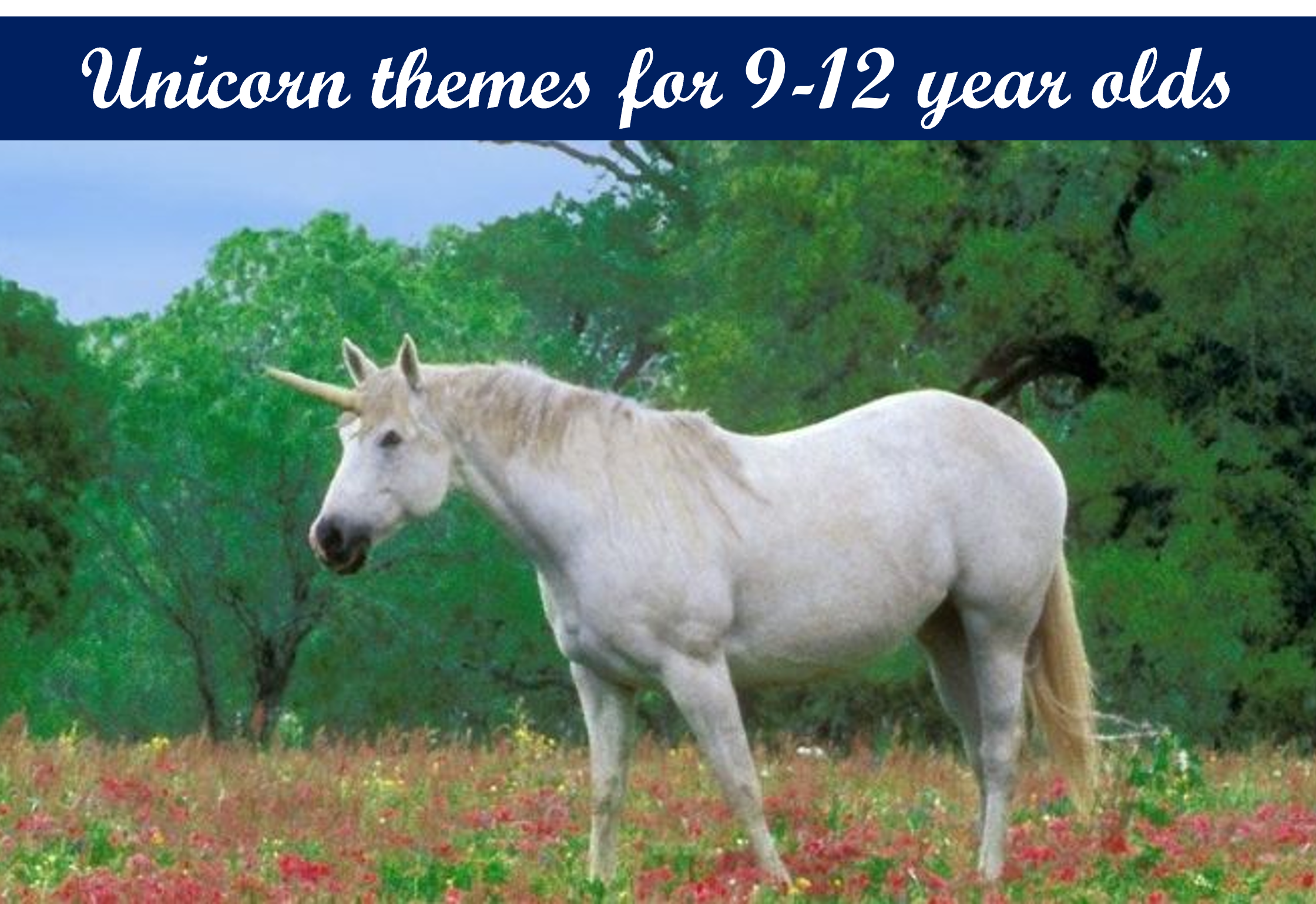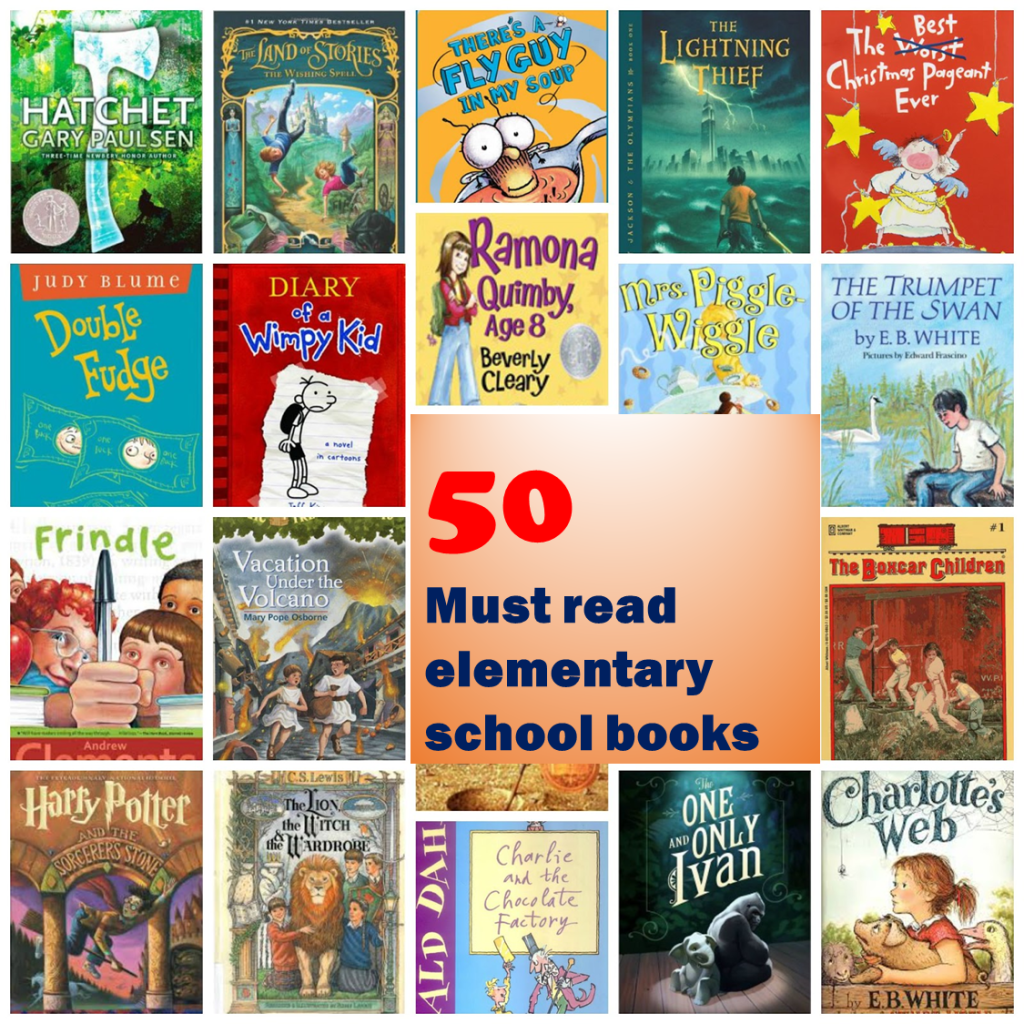
Embark on a literary adventure through the enchanting world of children’s literature! This curated list presents the top 50 books for elementary school students that are a must-read and beloved. From timeless classics that have stood the test of generations to contemporary gems that continue to capture young hearts, these titles offer a delightful blend of imaginative storytelling, relatable characters, and valuable life lessons. Published over the years, each book has left an indelible mark on the world of children’s literature, fostering a love for reading and learning.
- “Charlotte’s Web” by E.B. White (1952): E.B. White’s enchanting tale of the friendship between a pig named Wilbur and a spider named Charlotte. This timeless classic, published in 1952, explores themes of loyalty, compassion, and the beauty of life’s cycles.
- “Harry Potter and the Sorcerer’s Stone” by J.K. Rowling (1997): J.K. Rowling’s magical debut, published in 1997, introduces readers to the wondrous world of Hogwarts and the young wizard Harry Potter. It’s a cultural phenomenon, blending elements of friendship, courage, and the battle between good and evil.
- “Matilda” by Roald Dahl (1988): Roald Dahl’s 1988 masterpiece introduces readers to the extraordinary Matilda Wormwood. Celebrating intelligence, kindness, and the love of books, this whimsical tale continues to captivate young hearts.
- “Where the Red Fern Grows” by Wilson Rawls (1961): Wilson Rawls’ timeless tale, published in 1961, explores the unbreakable bond between a young boy named Billy and his loyal dogs. The heartfelt story resonates with themes of love, loss, and the enduring connection between humans and animals.
- “Diary of a Wimpy Kid” by Jeff Kinney (2007): Jeff Kinney’s 2007 sensation provides a comical and relatable look into the life of middle schooler Greg Heffley. The unique combination of text and illustrations has made it a literary phenomenon among young readers.
- “The Chronicles of Narnia” by C.S. Lewis (1950-1956): C.S. Lewis’ iconic series, starting with “The Lion, the Witch, and the Wardrobe,” transports readers to the enchanting land of Narnia. Spanning from 1950 to 1956, these tales weave together adventures, morality, and the enduring power of imagination.
- “The Magic Tree House” series by Mary Pope Osborne (1992-2017): Mary Pope Osborne’s educational and captivating series, spanning from 1992 to 2017, follows siblings Jack and Annie on thrilling time-traveling adventures. It seamlessly combines historical knowledge with excitement, making learning an engaging experience.
- “The BFG” by Roald Dahl (1982): Roald Dahl’s 1982 creation introduces readers to the Big Friendly Giant and adventurous orphan Sophie. Filled with whimsy and heart, this novel celebrates friendship, dreams, and the courage to stand against injustice.
- “The Tale of Despereaux” by Kate DiCamillo (2003): Kate DiCamillo’s 2003 masterpiece enchants readers with the story of a tiny mouse with big ears. This captivating tale explores themes of bravery, love, and the impact of small acts of kindness on a grand scale.
- “Percy Jackson & the Olympians” series by Rick Riordan (2005-2009): Rick Riordan’s series, starting with “The Lightning Thief” in 2005, follows Percy Jackson, a demigod navigating challenges and battling mythological creatures. The series seamlessly blends Greek mythology with modern-day adventures, captivating readers with its mix of humor and heroism.
- “A Wrinkle in Time” by Madeleine L’Engle (1962): Madeleine L’Engle’s timeless sci-fi fantasy, published in 1962, takes readers on an interdimensional journey with Meg Murry and her friends. Exploring themes of love, courage, and the battle between light and darkness, this book continues to captivate young imaginations.
- “Wonder” by R.J. Palacio (2012): R.J. Palacio’s heartwarming tale, published in 2012, introduces August Pullman, a boy with facial differences, as he navigates the challenges of fitting in at a new school. “Wonder” emphasizes empathy, kindness, and the beauty of acceptance.
- “The One and Only Ivan” by Katherine Applegate (2012): Inspired by a true story, Katherine Applegate’s novel, published in 2012, follows Ivan, a silverback gorilla, on his journey to freedom. The book explores friendship, art, and the power of hope.
- “The Boxcar Children” by Gertrude Chandler Warner (1924): Gertrude Chandler Warner’s timeless series, starting in 1924, follows the Alden siblings as they create a home in an abandoned boxcar and embark on adventures while solving mysteries. The books emphasize family bonds and resourcefulness.
- “Little House on the Prairie” by Laura Ingalls Wilder (1935): Laura Ingalls Wilder’s autobiographical series, beginning in 1935, recounts her pioneer family’s experiences in the American Midwest. These books provide a rich historical perspective on life, family, and resilience.
- “The Secret Garden” by Frances Hodgson Burnett (1911): Frances Hodgson Burnett’s classic, published in 1911, tells the story of Mary Lennox, a lonely orphan who discovers a hidden, magical garden on her uncle’s estate. The novel explores themes of healing, growth, and the transformative power of nature.
- “The Indian in the Cupboard” by Lynne Reid Banks (1980): Lynne Reid Banks’ magical adventure, published in 1980, unfolds when a boy discovers a small Indian figurine that comes to life. The novel explores the responsibilities of wielding power and the importance of empathy.
- “How to Train Your Dragon” series by Cressida Cowell (2003-2015): Cressida Cowell’s series, spanning from 2003 to 2015, follows Hiccup Horrendous Haddock III as he befriends dragons and navigates Viking life. The books celebrate courage, friendship, and understanding.
- “James and the Giant Peach” by Roald Dahl (1961): Roald Dahl’s whimsical tale, published in 1961, follows James as he embarks on a fantastical journey inside a giant peach. The novel explores resilience, friendship, and the joy of imagination.
- “The Mouse and the Motorcycle” by Beverly Cleary (1965): Beverly Cleary’s classic, published in 1965, follows Ralph, a mouse with a love for adventure, as he befriends a boy named Keith. The novel explores themes of friendship and responsibility.
- “The Percy Jackson series” by Rick Riordan (2005-2009): Rick Riordan’s series, starting in 2005, follows Percy Jackson, a demigod and the son of Poseidon, as he navigates the challenges of being a half-blood and battles mythological creatures. The blend of Greek mythology and modern adventure captivates readers.
- “Charlie and the Chocolate Factory” by Roald Dahl (1964): Roald Dahl’s classic, published in 1964, follows Charlie Bucket as he wins a golden ticket to Willy Wonka’s chocolate factory. The novel explores themes of morality and the consequences of greed.
- “The Wind in the Willows” by Kenneth Grahame (1908): Kenneth Grahame’s charming tale, published in 1908, follows the adventures of anthropomorphic animals, including Mole, Rat, Toad, and Badger, along the riverbank. The novel celebrates friendship and the joys of the English countryside.
- “Sideways Stories from Wayside School” by Louis Sachar (1978): Louis Sachar’s humorous collection, published in 1978, introduces the quirky students and teachers of Wayside School. The book’s absurd and imaginative scenarios appeal to young readers’ sense of humor.
- “Holes” by Louis Sachar (1998): In this multi-layered novel, published in 1998, Louis Sachar weaves together the stories of Stanley Yelnats and his fellow campers at Camp Green Lake. “Holes” explores the interconnectedness of fate, justice, and friendship.
Journey alongside talking animals, brave wizards, mischievous school kids, and magical creatures as you explore themes of friendship, courage, family, and the boundless power of imagination. Whether you’re rediscovering beloved favorites or diving into new adventures, this list is a treasure trove of literary wonders that will captivate, inspire, and leave a lasting impression on the young readers in your life.
- “Number the Stars” by Lois Lowry (1989): Lois Lowry’s historical fiction novel, published in 1989, tells the story of a Danish girl, Annemarie Johansen, and her family’s efforts to save Jewish refugees during World War II. The book explores themes of bravery, resistance, and compassion.
- “The Judy Moody series” by Megan McDonald (2000-2018): Follow the adventures of Judy Moody, a spirited and imaginative third-grader, in Megan McDonald’s series spanning from 2000 to 2018. The series captures the challenges and triumphs of elementary school life.
- “The Wrinkle in Time” series by Madeleine L’Engle (1962-2010): Meg Murry and her friends continue their cosmic adventures in Madeleine L’Engle’s series, published between 1962 and 2010. The books delve into complex themes of good versus evil, love, and the power of the human spirit.
- “Stuart Little” by E.B. White (1945): E.B. White’s classic, published in 1945, follows the adventures of Stuart Little, a mouse born to a human family. The novel explores themes of acceptance, courage, and the importance of family.
- “The Lemonade War” by Jacqueline Davies (2007): Jacqueline Davies’ novel, published in 2007, explores the entrepreneurial rivalry between siblings Evan and Jessie during summer vacation. The book introduces financial concepts in a relatable and engaging manner.
- “The Cricket in Times Square” by George Selden (1960): George Selden’s tale, published in 1960, follows Chester Cricket, Tucker Mouse, and Harry Cat as they navigate the bustling life of New York City. The novel explores friendship, self-discovery, and the magic of unexpected encounters.
- “The Little House series” by Laura Ingalls Wilder (1932-1943): Laura Ingalls Wilder’s autobiographical series, spanning from 1932 to 1943, continues to enchant readers with tales of pioneer life in the American Midwest. The books offer a rich historical perspective and celebrate family bonds.
- “The Rainbow Magic series” by Daisy Meadows (2003-2021): Daisy Meadows’ series, spanning from 2003 to 2021, follows the adventures of fairy friends who embark on magical quests. The books introduce young readers to themes of teamwork, friendship, and problem-solving.
- “The Magic School Bus” series by Joanna Cole (1986-2010): Joanna Cole’s educational series, spanning from 1986 to 2010, features Ms. Frizzle and her students on science-themed adventures. The books combine humor and learning, making science engaging for young readers.
- “The Berenstain Bears” series by Stan and Jan Berenstain (1962-2019): Stan and Jan Berenstain’s series follows the bear family as they navigate everyday challenges and learn important life lessons. The books offer relatable scenarios and moral guidance for young readers.
- “Flat Stanley” series by Jeff Brown (1964-2010): Jeff Brown’s imaginative series follows Stanley Lambchop, a boy who becomes flat and embarks on various adventures. The books explore creativity, problem-solving, and the joy of exploration.
- “The Junie B. Jones series” by Barbara Park (1992-2013): Barbara Park’s series features the comical and outspoken Junie B. Jones as she navigates kindergarten and beyond. The books capture the humor and innocence of early childhood experiences.
- “The Captain Underpants series” by Dav Pilkey (1997-2015): Dav Pilkey’s series follows the misadventures of George and Harold as they create a superhero, Captain Underpants. The books combine humor, illustrations, and creativity to captivate young readers.
- “The Judy Blume series” by Judy Blume (1970-2015): Judy Blume’s novels for young readers, including “Tales of a Fourth Grade Nothing” and “Superfudge,” explore the humorous and relatable challenges of growing up.
- “The Arthur series” by Marc Brown (1976-present): Marc Brown’s series follows the aardvark Arthur Read and his friends as they navigate school and family life. The books address common childhood concerns and promote empathy.
- “The Babysitters Club” series by Ann M. Martin (1986-2000): Ann M. Martin’s beloved series follows a group of friends who start a babysitting business. The books explore friendship, responsibility, and the challenges of adolescence.
- “Ramona Quimby, Age 8” by Beverly Cleary (1981): Beverly Cleary’s novel follows the adventures of Ramona Quimby as she navigates the challenges of third grade. The book captures the humor and authenticity of childhood experiences.
- “The Neverending Story” by Michael Ende (1979): Michael Ende’s fantasy novel follows Bastian Balthazar Bux as he discovers a magical book that comes to life. The story explores the power of imagination and the importance of storytelling.
- “The Geronimo Stilton series” by Geronimo Stilton (2000-present): The adventures of Geronimo Stilton, a mouse who is also a journalist and editor, captivate young readers with humor, mystery, and educational elements.
- “The Amelia Bedelia series” by Peggy Parish (1963-2013): Peggy Parish’s series features the literal-minded housekeeper Amelia Bedelia as she navigates various humorous misunderstandings. The books entertain and introduce wordplay to young readers.
- “The Goosebumps series” by R.L. Stine (1992-1997): R.L. Stine’s series of spooky and suspenseful stories have thrilled young readers for decades. The books offer a thrilling introduction to the horror genre while maintaining age-appropriate content.
- “The Magic Finger” by Roald Dahl (1966): Roald Dahl’s novella follows an eight-year-old girl with a magic finger that causes unexpected consequences. The story explores themes of empathy, understanding, and the impact of one’s actions.
- “The Henry Huggins series” by Beverly Cleary (1950-1964): Beverly Cleary’s series follows the adventures of Henry Huggins and his mischievous dog, Ribsy. The books capture the humor and challenges of childhood friendships.
- “The Encyclopedia Brown series” by Donald J. Sobol (1963-2012): Donald J. Sobol’s series features Leroy Brown, a young detective known as Encyclopedia Brown, as he solves mysteries in his hometown. The books encourage critical thinking and deductive reasoning.
- “The Charlie Bone series” by Jenny Nimmo (2002-2010): Jenny Nimmo’s series follows Charlie Bone, a boy with magical abilities, as he attends a school for gifted individuals. The books blend fantasy, mystery, and adventure in a magical setting.

